We take a 90 minute "slow train" ride from Osaka to Kyoto, i.e. not the bullet train.
"Kyoto, officially Kyoto City, is the capital city of Kyoto Prefecture and forms a part of the Keihanshin metropolitan area along with Osaka and Kobe. As of 2020, the city had a population of 1.46 million, making it the ninth most populous city in Japan. The city is the cultural anchor of a substantially larger metropolitan area known as Greater Kyoto, a metropolitan statistical area (MSA) home to a census-estimated 3.8 million people.
Kyoto is one of the oldest municipalities in Japan, having been chosen in A.D. 794 as the new seat of Japan's imperial court by Emperor Kanmu. The original city, named Heian-kyō, was arranged in accordance with traditional Chinese feng shui following the model of the ancient Chinese capitals of Chang'an and Luoyang. The emperors of Japan ruled from Kyoto in the following eleven centuries until 1869. The capital was relocated from Kyoto to Tokyo after the Meiji Restoration. The modern municipality of Kyoto was established in 1889.
The city was spared from large-scale destruction during World War II and as a result, its prewar cultural heritage has mostly been preserved.
Kyoto is considered the cultural capital of Japan and is a major tourist destination. It is home to numerous Buddhist temples, Shinto shrines, palaces and gardens, some of which have been designated collectively as a World Heritage Site by UNESCO."
Kyoto is one of the oldest municipalities in Japan, having been chosen in A.D. 794 as the new seat of Japan's imperial court by Emperor Kanmu. The original city, named Heian-kyō, was arranged in accordance with traditional Chinese feng shui following the model of the ancient Chinese capitals of Chang'an and Luoyang. The emperors of Japan ruled from Kyoto in the following eleven centuries until 1869. The capital was relocated from Kyoto to Tokyo after the Meiji Restoration. The modern municipality of Kyoto was established in 1889.
The city was spared from large-scale destruction during World War II and as a result, its prewar cultural heritage has mostly been preserved.
Kyoto is considered the cultural capital of Japan and is a major tourist destination. It is home to numerous Buddhist temples, Shinto shrines, palaces and gardens, some of which have been designated collectively as a World Heritage Site by UNESCO."
In Kyoto Station a posting shows us what's in store - history all over the city. First, since check-in isn't until 4pm, we squeezed our bags into a locker at the station before heading out for some first day sights.
We head to the food market stopping for a few moments at a shrine marking one end of the market.
Turning about-face, we enter:
First up, the fish cake, mmmm mmmm mm.
Tim is already thinking about the Wendy's poster we passed coming from the train station, as he nibbles the shrimp tempura. Meanwhile, Gerri can't pass on the milk pudding with caramel topping.
And now for the coup de gras - baby octopus with a hard boiled quail egg stuffed in its head. Yeah, she actually ate this thing.
Onto the castle...
Nijō Castle, from 1679, is a flatland castle consisting of two concentric rings (Kuruwa) of fortifications, the Ninomaru Palace, the ruins of the Honmaru Palace, and various support buildings and several gardens. The castle sprawls over 68 acres), of which 2 acres is occupied by buildings. It is one of the seventeen Historic Monuments of Ancient Kyoto which have been designated by UNESCO as a World Heritage Site.
Nijō Castle, from 1679, is a flatland castle consisting of two concentric rings (Kuruwa) of fortifications, the Ninomaru Palace, the ruins of the Honmaru Palace, and various support buildings and several gardens. The castle sprawls over 68 acres), of which 2 acres is occupied by buildings. It is one of the seventeen Historic Monuments of Ancient Kyoto which have been designated by UNESCO as a World Heritage Site.
Another gate to pass through, and we're on the inside, at lower right in above diagram at the third red arrow...
The weather people promise no rain today, but Tim's umbrella wouldn't fit inside the train station locker.
"The 36,000-square-foot Ninomaru Palace consists of five connected separate buildings and is built almost entirely of Hinoki cypress. The decoration includes lavish quantities of gold leaf and elaborate wood carvings, intended to impress visitors with the power and wealth of the shōguns. The sliding doors and walls of each room are decorated with wall paintings by artists of the 15th century establish Kanō school.
The castle is an excellent example of social control manifested in architectural space. Low-ranking visitors were received in the outer regions of the Ninomaru, whereas high-ranking visitors were shown the more subtle inner chambers. Rather than attempt to conceal the entrances to the rooms for security (as was done in many castles), the Tokugawas chose to display them prominently. Thus, the construction lent itself to expressing intimidation and power to Edo-period visitors (1603-1868)."
The castle is an excellent example of social control manifested in architectural space. Low-ranking visitors were received in the outer regions of the Ninomaru, whereas high-ranking visitors were shown the more subtle inner chambers. Rather than attempt to conceal the entrances to the rooms for security (as was done in many castles), the Tokugawas chose to display them prominently. Thus, the construction lent itself to expressing intimidation and power to Edo-period visitors (1603-1868)."
(below photos)
"Honmaru Goten, meaning "the palace in the inner-most circle of defense". Honmaru Palace was originally similar to Ninomaru Palace. The original structures were replaced by the present structures between 1893 and 1894 by moving one part of the former Katsura Palace within the Kyoto Imperial Enclosure (Kyoto Gyoen, the enclosure surrounding the Kyoto Imperial Palace) to the inner ward of Nijō Castle, as part of the systematic clearing of the disused residences and palaces in the Imperial Enclosure after the Imperial Court moved to Tokyo in 1869. In its original location the palace had 55 buildings, but only a small part was relocated. In 1928 the enthronement banquet of Emperor Hirohito was held here."
For us, it's all closed for refurbishment.
Views of the garden and inner moat:
Working our way outward now...
Now back in our hood after checking into our latest digs - we'd passed this isakaya earlier, and had to circle back and check it out - the place "Sushi Bar Onihasoto", became one of our two favorite eateries for Kyoto, the other just a few paces from here. It's a nice laid back and welcoming spot - and with calming views of..........motorcycles!
A 'tuna of two types' roll featured on their menu - we split this a couple times and loved it, and then we ate our own on the last visit and the green herb inside was too much then (if you're reading this, and come here, note).
And just 2 1/2 blocks away are a couple of breweries...


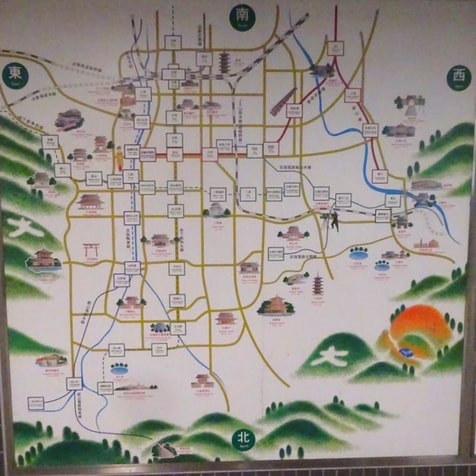












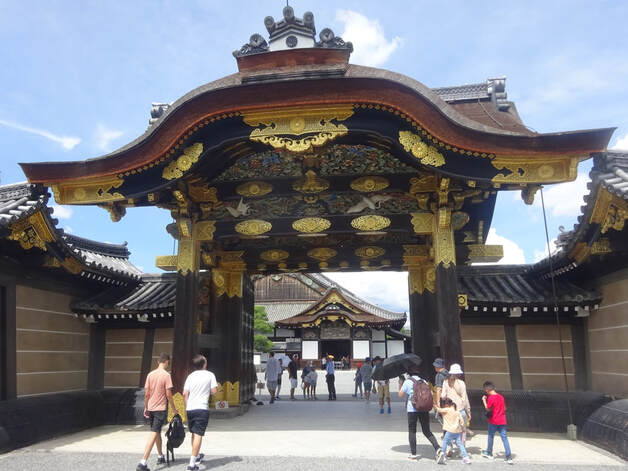




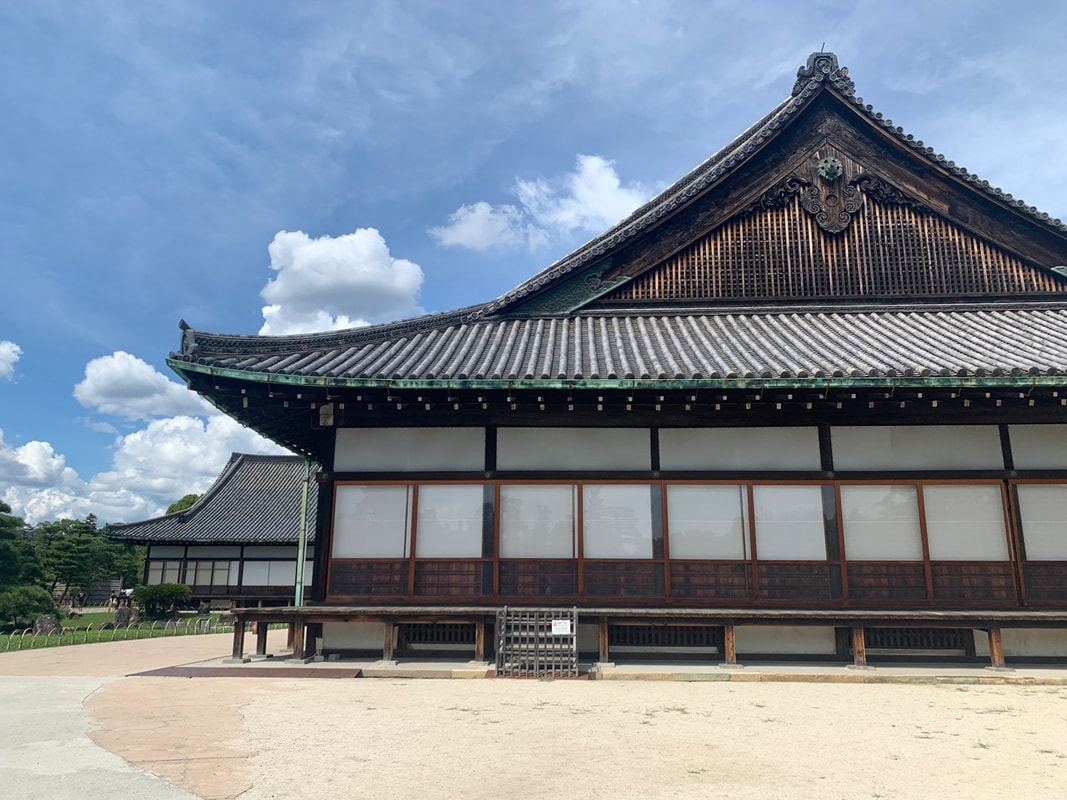



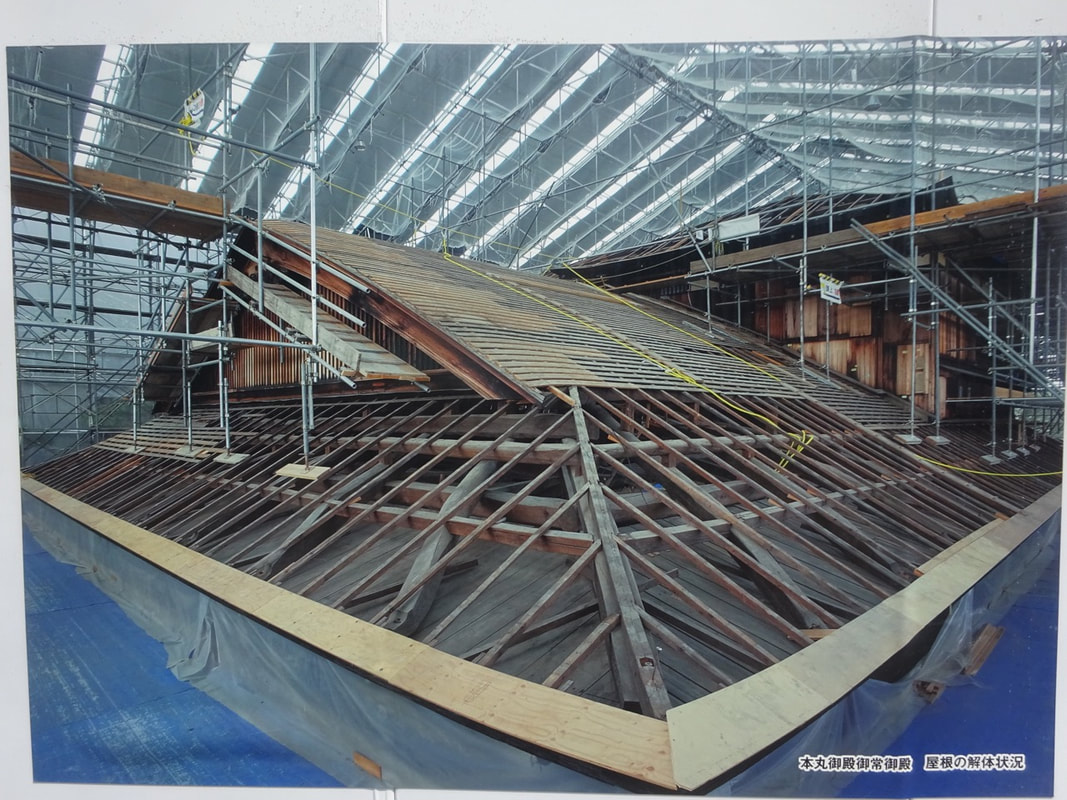


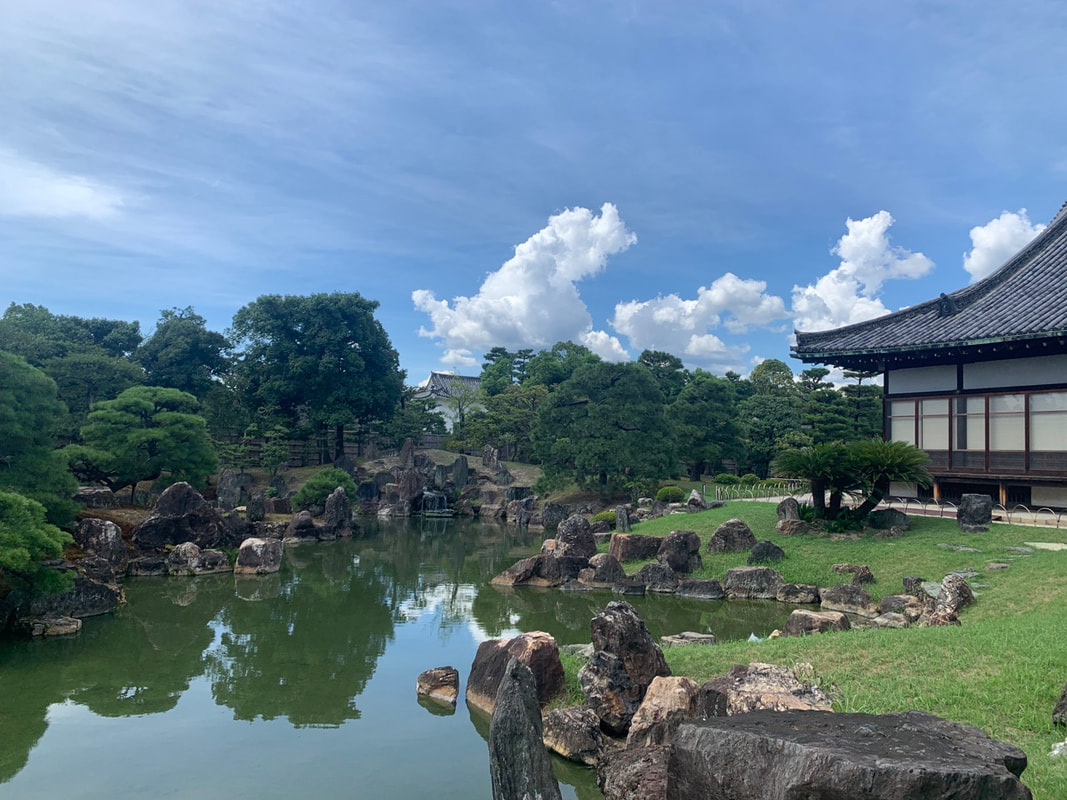
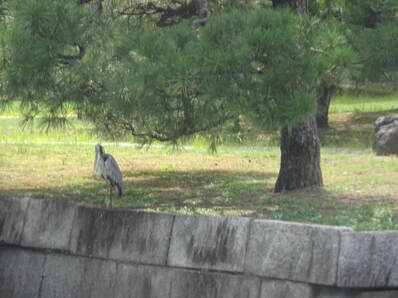
















 RSS Feed
RSS Feed
